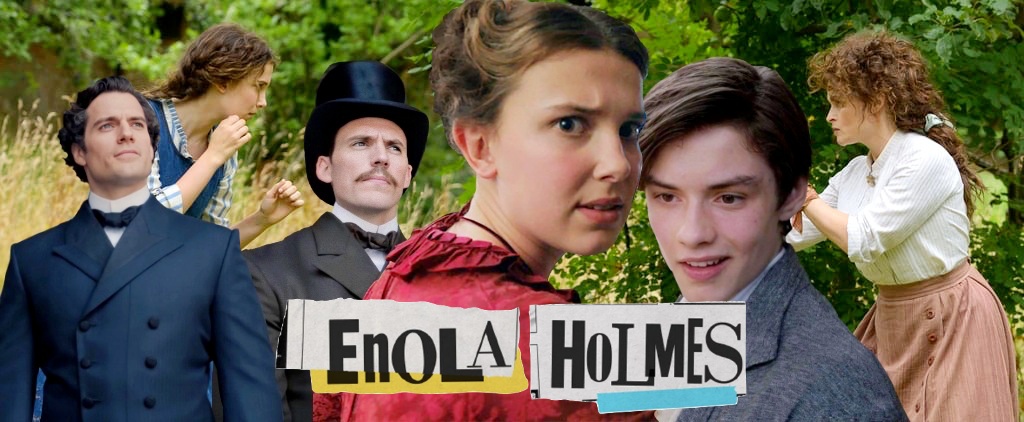Enola Holmes: Movie Review
October 27, 2020
On September 23, Netflix released “Enola Holmes”, an adaptation of the 2006 series of novels by Nancy Springer of the same name, for streaming everywhere. “Enola Holmes” centers around the life of the fictional sister of the famous detective Sherlock Holmes. Her name, Enola, is an anagram for the word “alone” which plays into the film’s themes of family and self-exploration.
Enola, played by “Stranger Things” actress Millie Bobby Brown, is everything a 19th-century girl shouldn’t be: loud, intelligent, and a lover of pants. When her mother Eudoria, played by Helena Bonham Carter, disappears, her two older brothers Sherlock (Henry Cavil) and Mycroft (Sam Claflin) visit home for the first time in many years to see to her care. Mycroft insists Enola must attend finishing school and Enola runs away, following breadcrumbs her mother left behind. On her way to London, she meets Lord Tewksbury, played by Louis Partridge, and the pair become fast friends before going their separate ways when they arrive in the big city.
“My whole family watched Enola Holmes and it kept us super interested the whole time! We loved the new twist on an old story,” says Elise Favret (‘22). “We definitely didn’t know what was going to happen.”
#EnolaHolmes starring Millie Bobby Brown, Henry Cavill, Sam Claflin and Helena Bonham Carter is currently pacing to reach 76 million views in its first four weeks, which will make it the sixth-most watched Netflix original of all time. pic.twitter.com/YiKgwdRgkr
— Film Updates (@FilmUpdates) October 21, 2020
Throughout the film, Enola proves herself to be the perfect role model for young girls. Not only does she go against men like her brother Mycroft’s misogynistic views, but she also refuses to ignore her femininity. For example, at the beginning of the film, when a rather rude teacher insists that she wear a corset, Enola refuses. She then donned pants on her daring escape before wandering inside a dress store in London. Picking out the most extravagant red dress with its own corset only to encounter an assassin who she successfully fights off.
As most PG-13 movies aimed at teenagers do, “Enola Holmes” shows the budding romance between Enola and Tewksbury. However, the thing that the film does extremely well is that it doesn’t make a romantic relationship the primary focus of the protagonist’s life. The film makes it clear that Enola’s story is just that: Enola’s. And that while it does show the relationships Enola forms with her brothers, whether good or bad, and Tewksbury, these relationships are there to help develop her character and do not engross all her thoughts and concerns.
Favret says, “My [favorite] character has to be either Enola because she is such a strong and independent protagonist, or Tewksbury because he was loyal, and stood up for his beliefs.”
Oh. Oh, my goodness. Oh, my #EnolaHolmes ! https://t.co/cOTHGdFWt9
— Nancy Springer (@NancySpringer) October 21, 2020
The Holmes brothers were also very engaging to watch develop over the film. While Mycroft mostly stays a sexist “nincompoop”, if one were to describe him in Enola’s words, Sherlock grows to respect Enola much more after she beats him to the mystery of who had murdered Tewksbury’s father. Sherlock still has a long to go on the path of respecting women more but his progress is still monumental, considering the time period.
“My least favorite is definitely Mycroft for obvious reasons,” says Favret. “He’s annoying and definitely doesn’t care for Enola at all.”
Enola Holmes does not let society’s standards about a proper girl’s role and purpose halt her passion to explore. In all, Millie Bobby Brown could not have picked a better film to star in and produce.

